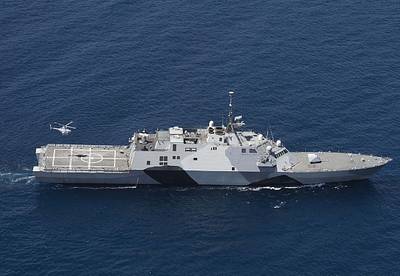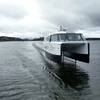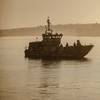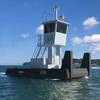The U.S. Navy is evaluating a scaled-down version of the Surface Electronic Warfare Improvement Program (SEWIP) system for potential incorporation on future Littoral Combat Ships (LCS), Naval Sea Systems Command announced, Nov. 20.
SEWIP is an evolutionary development block upgrade program for the SLQ-32 Electronic Warfare (EW) System and will be designated as AN/SLQ-32C(V)6. Still in the early stages of development, its purpose is to provide LCS with an improved electronic warfare suite to improve the ship's defense capabilities.
"This system is another example of the close partnerships to deliver a tremendous improvement in warfighting capability to our Sailors," said Capt. Doug Small, major program manager for Above Water Sensors (PEO IWS 2.0). "By maintaining commonality with SEWIP Block 2, we are able to simultaneously reduce life-cycle sustainment costs for the fleet."
Upgrades to the antenna, receiver and combat system interface allow the SEWIP system to pace new threats; improve signal detection, measurement accuracies and classification, and mitigate electromagnetic interference.
AN/SLQ-32(V)6 provides enhanced electronic support capability that allows better detection of current threats. The SEWIP Block 3 will include improvements for the electronic attack by providing integrated countermeasures against radio frequency-guided threats and extending frequency range coverage. The Block 3 will be installed on surface combatants that have the existing active version of the SLQ-32.
An at-sea demonstration to test the effectiveness of the system's capabilities on LCS is scheduled for December 2014 aboard USS Freedom (LCS 1) off the coast of San Diego.
Program Executive Office for Integrated Warfare Systems manages surface ship and submarine combat technologies and systems, and coordinates Navy enterprise solutions across ship platforms.
Program Executive Office for Littoral Combat Ships provides a single program executive responsible for acquiring and sustaining mission capabilities of the LCS class from procurement through fleet employment and sustainment.












